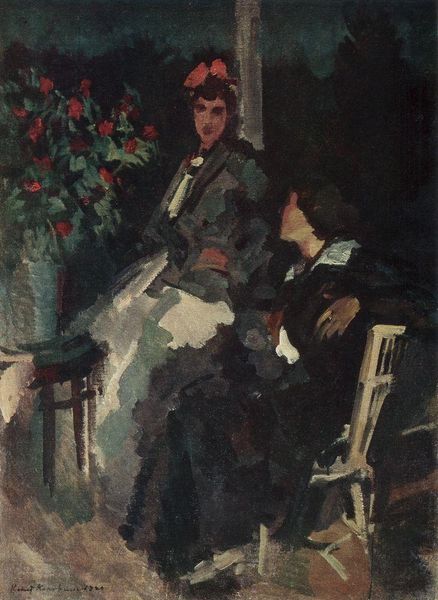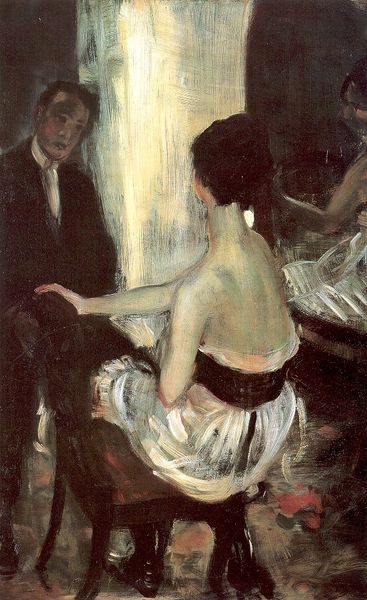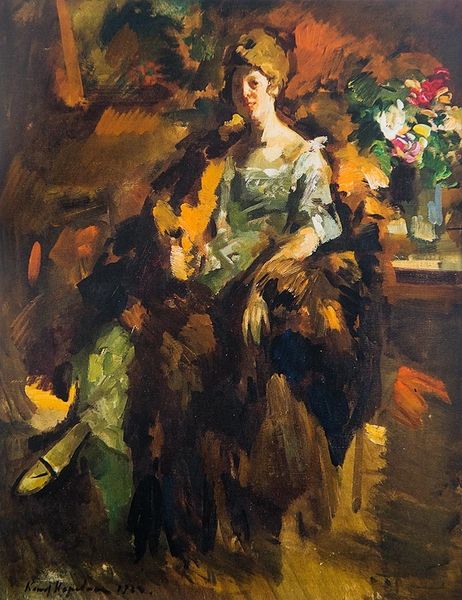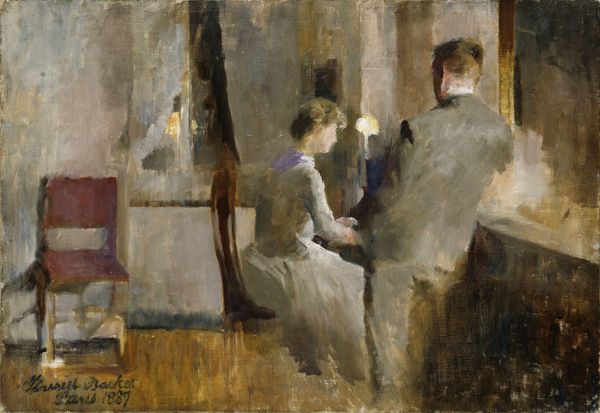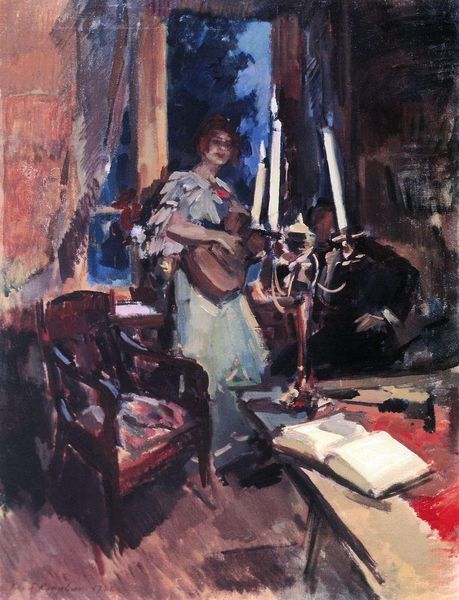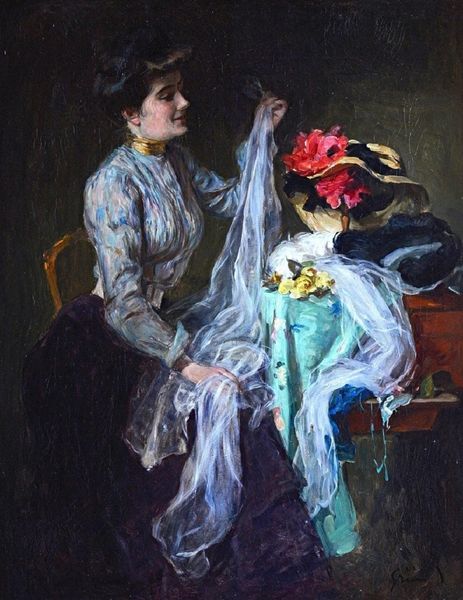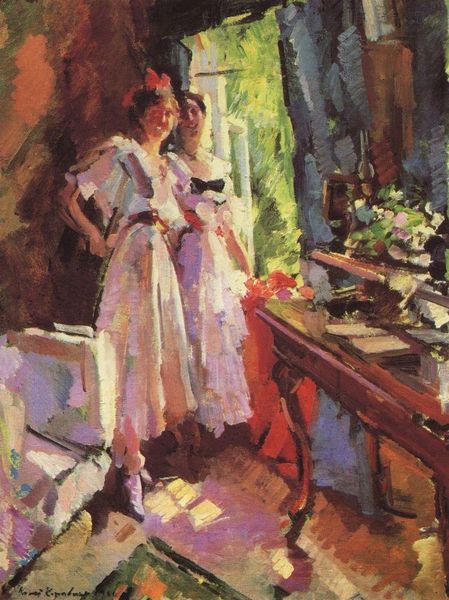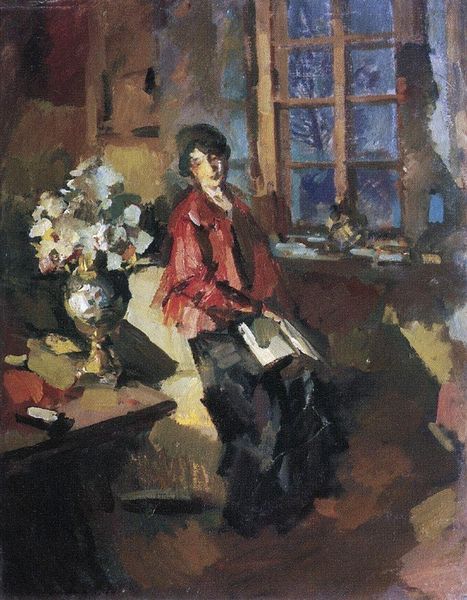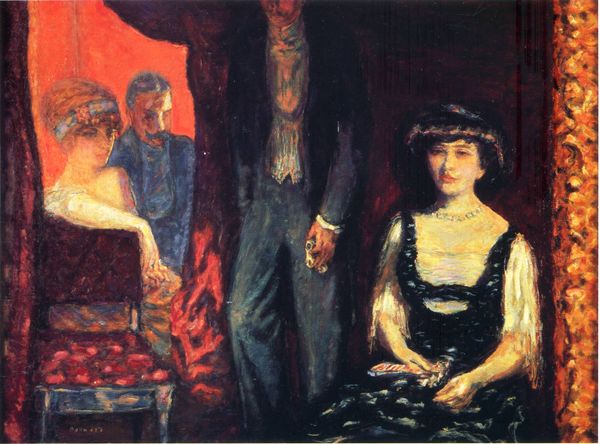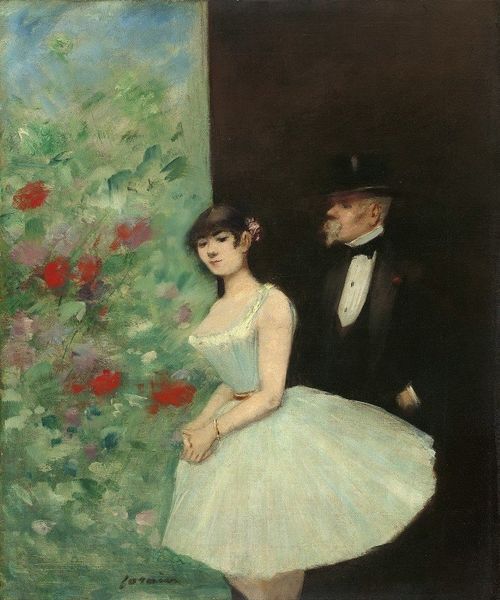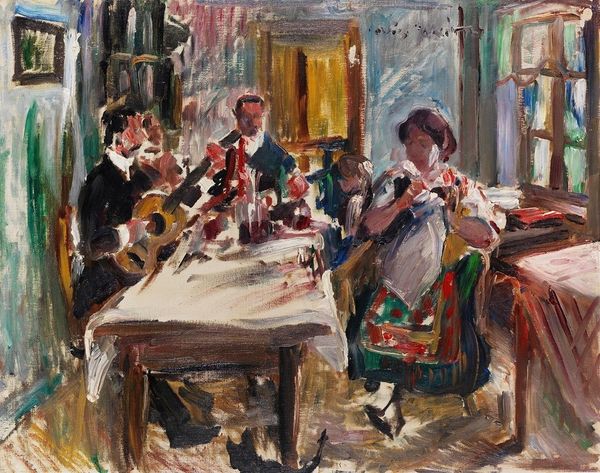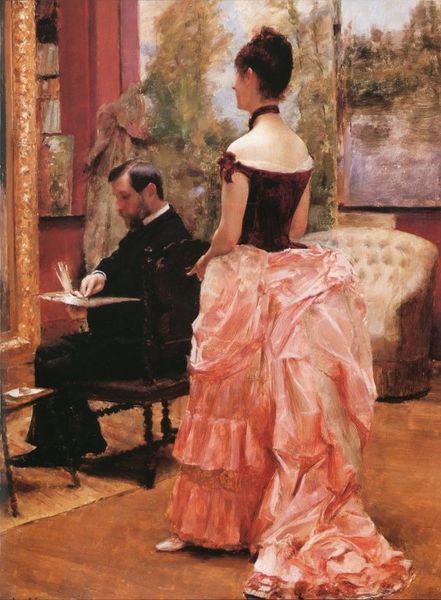
Copyright: Public domain
Curator: Konstantin Korovin's "Evening," painted in 1917. What's catching your eye about it? Editor: That striking contrast! The darkness of the room, those deep reds, pushing against the cool, luminous moonlight streaming through the window. Curator: Exactly. Korovin employs impasto brushstrokes, visible layers of oil paint, creating a textured surface. Look how he uses colour to define form rather than relying on precise outlines. Editor: The woman playing guitar... what’s the occasion? I mean, it clearly suggests an intimate, even romantic setting. But look at the man - his stance. Curator: One might interpret that as casual observance, but context is everything here. Painted in 1917, amidst the turbulence of World War I and the looming Russian Revolution, this isn’t just a genre scene. It feels like a longing for peace, beauty in a collapsing world. Editor: So, escape, a temporary removal? Given Korovin's privileged background and subsequent emigration, does that tinge our reading of this? Is he unconsciously portraying a world about to vanish, a final serenade? Curator: Possibly. But notice also how the colour unifies the canvas: Red accents repeat in the rug, the flowers, framing the window which offers that escape. It pulls you between the stability of this room and what could be outside. Editor: Interesting, the architecture directs my sight. It is certainly a carefully constructed space. The placement and contrast really does focus attention and creates dynamism. Curator: Precisely. It speaks volumes about Korovin's mastery of composition, colour theory, creating emotion. Editor: Makes one wonder where such skills placed Korovin in history. It makes me pause on this "evening", imagining a different time, in very distinct turmoil. Curator: Indeed, a work rich in both visual pleasure and socio-historical depth.
Comments
No comments
Be the first to comment and join the conversation on the ultimate creative platform.
